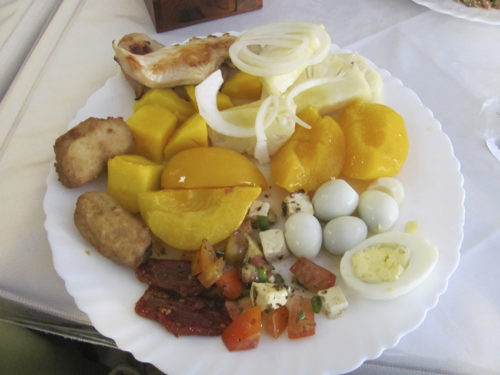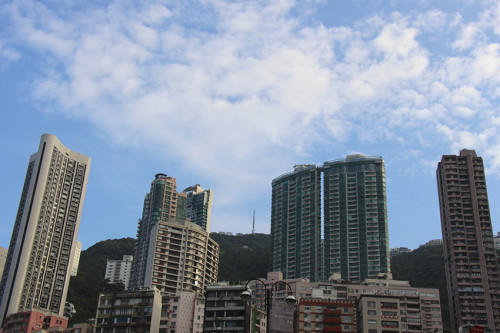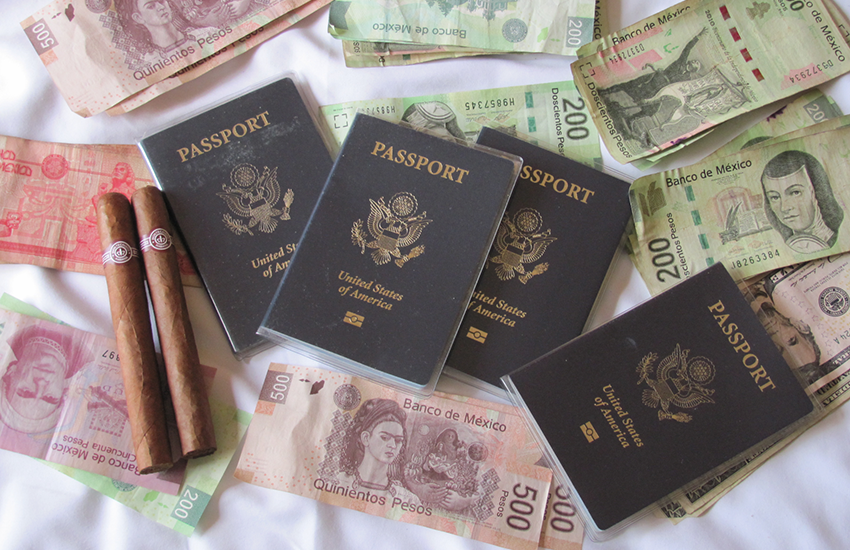The hardest part of upgrading your life is taking the first step. This guide will walk you through the travel-tested process I use every time I upgrade my lifestyle by changing the country I call home.
Quick Links
- How To Get Local Cell Phone Coverage
- How To Acquire Local Currency
- How To Get Transport From The Airport
- How To Get Lodging
- How To Set Up Your Base
- How To Eat
- How To Sleep
- How To Get Office Space
- How To Secure an Apartment
- How To Get To Know Your New City
- How To Get Additional Supplies and Set Your Roots
- Emergency Travel Kit
Let’s make this fun, shall we?
For this guide, I am going to assume that you have had absolutely no time to research the country you are moving to. I am also going to assume that you have just landed in a major international city and are now standing excited but confused in your destination airport. (If you have questions about applicable visas, check with your local government. If you have questions about finding cheap airfare, see this post.)
Step 1 – Get Local Cell Phone Coverage
Your first goal after landing is to get local cell phone coverage. This step is essential for all of the logistics that will follow. There are two ways to do this. The first (my preferred method) is to buy a local SIM card and put it into your unlocked cell phone. I have done this all over the world and found it to be both affordable (generally under $30 USD/22 Euro for two weeks or more of service). In order to do this your phone needs to be unlocked. This can now be done for free by most major carriers. (If you live outside of the United States, there is a good chance your phone is already unlocked. Boo-hiss American Telcoms) You can purchase a local SIM card at most major airports. Don’t worry too much about the phone number you are assigned (this is easy to replace), instead focus on getting data coverage.
If your phone is not unlocked or you can’t buy a local SIM card, the second method is to buy a local prepaid phone. This option can be cheaper but usually means you will not have a smart phone. I have gone this route in the past (before I had an unlocked phone) but avoid it now as it is now extremely helpful to have access to smart phone apps.
When abroad, I use a service called SendHub (available for free or paid for more features) in order to receive and make calls from my lifetime phone number (This is what I call my phone number that I received in college in the country I grew up in.). I prefer Sendhub over alternatives like Google Voice because this service will ring your foreign phone over both wifi and data when someone calls your lifetime phone number. It will also directly call from the lifetime number as opposed to having to call a foreign server and then your local number. Lastly, since you are using a local SIM card, you can also use your phone as normal to make and receive local calls (just make a call without using the Sendhub app).
The last thing I do is write down my new local number (it will be on the card that contained your SIM card) and store it in the cloud (I use Apple Notes but you could use Dropbox or any other cloud alternative). This will help you later when you are stumbling to remember your own phone number.
Step 2 – Acquire Local Currency
Your next task is to get local currency. If you are at an airport that has a currency exchange, note the buy/sell price from your home currency to the local currency but do NOT exchange your money from home. Instead, find an ATM and directly withdraw the local currency there. (Note: If you can get approved for the Charles Schwab debit card, that card will actually refund you for the ATM fee) This way you won’t lose out to the exchange rates or commissions.
I generally withdrawal in the local currency the equivalent of $50 USD/€37 Euro per day (max of $300/€220) from an ATM machine. I put the local equivalent of $75 USD/€55 Euro in my wallet and hide the rest in my hidden emergency travel pack (See final section. You can go with either the chest or the waist variety. In my experience the only difference is in personal taste).
I carry a wallet but treat it as a decoy. I never put all of my money in it and it never holds more than 1 credit card. If (when) I get pick-pocketed, I want them to find the decoy fast so that the damage made to me is minimal.
If you can’t withdrawal money at the airport, you are going to need to exchange money at a local bank. This is going to cause you some problems with the next step (getting transport from the airport). The solution to this is to come prepared with the travel emergency kit I describe at the end of this guide. From the kit you can either use one of the world’s generally accepted currencies (US Dollar, European Euro or the Japanese Yen) to get yourself downtown.
If worst comes to absolute worst, you can try trading a physical item for a taxi ride (I once had to do this in Cuba). Avoid trading electronics (as that puts you in an unsafe position for being robbed) and instead trade clothing items. Brand name shoes and jeans have been the most successful trading items for me when I get in a rough spot.
Step 3 – Transport From The Airport

When trying to get to a city from an airport, I always look for a train first. Trains/subways/metros, if available, tend to be the best mix between price and convenience. If this is not an option, I recommend taking a taxi. (Note: It is always cheaper to take a public bus than it is to take a taxi. That said, it is a lot harder and I have found that the added stress of figuring out the foreign bus system is not worth the financial savings.)
First, look for an official taxi stand that is located within security within the airport. They usually say “official”, “oficial” or “رسمي”. If you can find one, you are golden, if not, you are going to have to use your best instinct to pick the most trustworthy provider. (Look for any taxis labeled “airport”) I recommend asking someone at the information stand (if available) for prices and taxi company recommendations. If there is no information stand available (this happens all of the time) try to compare the cost of multiple drivers. (This is hard with language barriers but normally doable using just numbers and fingers to show value)
Do NOT accept the offers from drivers who will enviably walk up and pester you. Their prices are almost always multiple times higher than the metered fare.
BEFORE you hand the taxi driver your bags, make sure to have her repeat the agreed upon price. The unwritten agreement between passengers and taxi drivers regarding agree upon prices is honored almost everywhere. (I have been amazed by how true this is!)
See the next step (Step 4 – Lodging) for hints on communicating your desired destination to a taxi driver who doesn’t speak your language.
Once the taxi is going, make sure that the meter is going. If it is not, throw a fit until the taxi driver turns it on. It is better to be annoying now than to try to convince the driver after you have arrived downtown or to your lodging. Be forewarned that many times the meter starts at a high number (an airport fee) and then doesn’t start counting until after that value is reached by distance. More than once, I have freaked out because the meter doesn’t look like it is running only to find out later that I am an idiot!
Additionally, keep in mind that any tolls you pass may or may not be directly passed onto you (in the form of your bill). This practice varies widely by country (and trustworthiness of the taxi driver). The only good thing about this is that road tolls tend to be inexpensive so it is unlikely that you financially ruined by this unknown. That said, you will likely be annoyed if you find out later you were tricked.
During your taxi ride is a good time to test your phone and make either real or fake phone calls. This shows the taxi driver you are connected and makes you a less appetizing target. (Just don’t be flashy if you have an expensive phone as this would negate the benefit). At this point, I also make it clear that I am taking a photo (with my phone) of both the taxi number (it is usually on the inside of the passenger door) and the driver (if applicable). This is another signal to the taxi driver that you do not make a good target for taking advantage of.
Step 4 – Lodging
Realistically, I recommend getting your first three days of lodging reserved before you leave (it is cheaper and easier this way.) If this is an option, print out the address (in the local language!) on a piece of paper in order to give to the taxi driver or train ticket official. If you don’t have access to a printer, display the address on an otherwise blank screen on your smartphone. (This isn’t ideal as it pegs you as a theft target but it is a better solution than trying to just speak the address in a language you are not familiar with.)
If reserving your lodging beforehand is not an option, just tell the taxi driver to take you to one of the common name brands (Hilton, Marriott, Sheraton, Radisson, etc..) The goal isn’t to stay at one of the those hotels, instead it is just to get to the hotel district of the applicable city. From there, you can find something cheaper than the name brands (but your taxi driver doesn’t need to know that).
Even when I intend to live in a new country, I always start my trips with at least 3 days of living in a hotel or motel. This makes arrival safe and easy. You also have an easy check-in process (as opposed to something like Airbnb which I otherwise fully recommend). Hotels aren’t ideal but they act as a great safety net.
Step 5 – Set Up Your Base
Once you get your safety-net lodging, lock your door and put the do not disturb on it. While most of the time this is not necessary, it does reduce the minor risk of housekeeping stealing some of your possessions while you are gone.
Next, check Internet connection on both your phone (via your data plan) and the hotel’s wifi (presumably you have a laptop). This will be your lifeline and depending on your case, it may actually be worth leaving the hotel if the hotel doesn’t have Internet access.
After that, check to make sure your bed is manageable. (This will vary largely by personal taste) It doesn’t need to be perfect, just good enough. If you have a lousy bed you are going to have a lousy night.
Lastly, make sure your stuff is secure (by putting it in a safe if it is available) or by locking it to one of the pipes in the bathroom. (Don’t secure it to the shower rod! Those are intentionally easy to break)
Step 6 – Eat
 With your emergency travel pack (see applicable section at the end of the guide), go find something local to eat.
With your emergency travel pack (see applicable section at the end of the guide), go find something local to eat.
If you have a smart phone, open up Google Maps and put a star on your hotel (This saves it as a place on your Google account). This will be your beacon for getting back. You can also always show the saved place to a cab driver or just use the map and walk back. I generally just walk out of the hotel, choose a direction and go straight. If you don’t turn down streets, it is always a straight shot back. You could ask the hotel reception for recommendations on food but I always find it more fun to just go out and walk. Your goal is not to explore the entire city at this point, it is just to get a general feel for a tiny peice of it.
Step 7 – Sleep
 It is essential that you get your body adjusted to the local timezone as soon as possible. If it extremely late when you arrive, you will need to skip the eating step (I hate when this happens!) In this case, it is more important to sleep well than to cram yourself with new food. Plus, if it is already extremely late, then breakfast isn’t that far away. Sleep well.
It is essential that you get your body adjusted to the local timezone as soon as possible. If it extremely late when you arrive, you will need to skip the eating step (I hate when this happens!) In this case, it is more important to sleep well than to cram yourself with new food. Plus, if it is already extremely late, then breakfast isn’t that far away. Sleep well.
Step 8 – Get Office Space
Next, I recommend locking down a co-working office space. Why would you want to get office space before getting an apartment?
- Apartments usually take longer to lock down than co-working spaces. It is likely going to take you at least a few days to secure your apartment. You don’t want these days wasted. The sooner you get a co-working space, the sooner you start meeting ex-pats and locals. These are people you can ask about finding apartments.
- Co-working spaces almost always have extremely fast Internet access and are open 24 hours a day. Worst case scenario, you could just sleep a night at your co-working space.
What is a Co-working Space?
A co-working space is a shared office space. Whereas the traditional office model has only one company in a space, a co-working space has many tiny companies within one space. The benefit is small companies can share resources and it is extremely easy to meet new people to collaborate with. (In fact, I am writing this guide while sitting in a co-working space in Saigon while collaborating on a work focus sprint with some people I just met)
To find a co-working space, go to Google and search “CITY NAME coworking space”. I usually spend my first day in a new country just roaming between co-working spaces. Almost all of them offer a free day so it won’t cost you anything and it will give you a chance to do more research on the city you are in.
A few tips for getting the perfect co-working space:
- Internet access is the most important aspect of a co-working space. People are a close second. :-) Make sure both are up to your standards when you arrive. (Speedtest.net is a great choice for testing the former, casual conversation works for testing the latter :-p) Start by inviting people to lunch.
- The co-working space should offer locker space (sometimes this is at a slight additional cost). This is helpful for diversifying the location of your valuables.
- The space should offer at least some free drinks or food. Generally this takes the form of sliced fruit or soda/pop/coke.
- The space should be somewhere you can see yourself working for many hours at a time. Many co-working spaces are bright and fun but some are dreary and boring. Choose the one that reflects the people you would want to spend time with.
Step 9 – Secure an Apartment
Getting an apartment in a foreign country is difficult but certainly not impossible. (Remember, in most places, landlords will actually be seeking out long-term ex-pats as the currencies can be in their favor). The very first thing I check when I start an apartment hunt is the price range in the applicable city. I have found the best way to do this is to use a website called Numbeo. This site will give a crowdsourced look at the cost of a variety of common items and services in an applicable city. It also shows you the expected range of apartment costs.
 After I check Numbeo, I check Craigslist. Craigslist offers a lot of scams but its one major benefit is that it allows you to find local landlords who speak your language. You can gauge their fluency of your language by reading their listing information. Instead of e-mailing the landlord, be sure to call them. It is easy to ignore an e-mail but difficult to ignore a call. As such, my success ratio with phone calls vs emails has been much higher. This will also help identify how much of an issue the language is going to be. (Tip: for figuring out foreign phone systems, see www.countrycallingcodes.com)
After I check Numbeo, I check Craigslist. Craigslist offers a lot of scams but its one major benefit is that it allows you to find local landlords who speak your language. You can gauge their fluency of your language by reading their listing information. Instead of e-mailing the landlord, be sure to call them. It is easy to ignore an e-mail but difficult to ignore a call. As such, my success ratio with phone calls vs emails has been much higher. This will also help identify how much of an issue the language is going to be. (Tip: for figuring out foreign phone systems, see www.countrycallingcodes.com)
Lastly, go to Google and search for “Apartments CITY NAME”. Be forewarned that this will likely bring up a list of agencies (which means higher prices) but it does have the benefit of giving you a nice perspective on which city districts are popular for travellers.
I have found my last two foreign apartments via word of mouth (from people I meet at a co-working space) or via craigslist.
Step 10 – Get to Know Your New City
This step is the most fun. :-)
Start by reading the wiki travel article (wikitravel.com) for your new city. I have found that this resource is the best for showing you practical information about a city (such as how to cross the street when every intersection is crazy. I am looking at you Saigon!). Next Google, “Yelp alternative CITY NAME”. This will help you find cafes and good restertuants.
Lastly, go onto Facebook (search for Ex-pats CITY NAME), meetup.com and lonelyplanet.com and start to meet new people. Remember, it is almost always easier to meet people while traveling than it is while home. When traveling, other people want to make new friends just as much as you do.
Step 11 – Secure Additional Supplies and Set Your Roots
Locate the nearest convenience store, over the next few days you are going to find that you need supplies. For me, this generally includes; laundry detergent, a bar of soap, BIC razors, a bath towel (we Americans are spoiled with giant bath towels) and maybe an extra pillow. Depending on the country this list will take 2 or 3 stops.
Once I have secured my local phone number and apartment, I send the information to friends back home. I also register with my country’s government as a precautionary measure. The added bonus of registering with your country’s government (at least for the United States) is they will e-mail you any time something big/dangerous/crazy is happening. I have had more than one occasion where I learned about an attempted coup before my local friends knew about it. (Both times were in Argentina)
Generally one of the last tasks I do on this list is to find a bank or ATM machine that will let me withdraw USD or Euro. This is purely preemptive (bribe money and/or rent money) but is usually tricky to figure out.
Finally after you have finished all of the above steps, sit down and drink some water. You WILL be dehydrated. :-)
Emergency Travel Kit
It is admittedly dorky but after a few bad incidents, I now always travel with an emergency travel kit. Kits will vary but I recommend including at least the following items:
- $100-200 USD (mixed denominations weighted toward 20s)
- €100-200 Euro (mixed denominations weighted toward 20s)
- ¥1000-2000 Yen (mixed denominations weighted toward 100s)
- Extra local currency (amount will vary by how long it has been since your last ATM visit :-p)
- 1 debit card (call your bank first and let them know you will be traveling)
- 1 credit card (note, this is in addition to the credit card in your decoy wallet)
- 1 extra SD card
- 1 spare form of ID (I use my driver’s license)
- 1 lamented emergency contact list (remember, even phone numbers/address that you know by heart can be difficult to remember when you are in an emergency)
- 1 printed lodging address. (your apartment)
- Optionally your passport. The pro to carrying this is you will have access to hotels (they won’t let you check-in without one). The con is it can really get you in trouble if your passport gets lost or stolen.
Lastly, try avoiding metal objects in your emergency travel kit (common offenders are zippers, keys and coins.) The goal is you want to be able to walk through metal detectors without having to reveal your secret travel stash.








